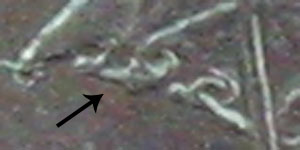How to detect counterfeits
British Trade Dollars
Coin Information:
With so many counterfeits in this coin series in the market, I have found several highlights that you can check that will differentiate between a real coin and a counterfeit coin. As I have no information how many different parties were actually making the counterfeits, there will be more than one variation of the counterfeits.
1st method:
Check the weight of the coin, it should be 26.95 grams as specified by the coin itself. The silver trade dollars of the late 1800s and early 1900s are bullion products. Their minting nations advertise their silver content as the selling point for the usage of the coins. For more information, kindly check my explanation on the fake Japanese Meiji coins.
2nd method:
The price of the coin. Real Trade Dollars coins sell for around US$ 20 for an average conditioned coin (average = rather worn out). If you are being offered a real nice detailed coin with a great luster for US$ 5, think of why the seller would want to sell it to you for $5 when he/she can get probably more than US$ 50 for the coin. When it sounds too good to be true, it usually is.
I suppose once in a blue moon someone who doesn't know the actual value of the coin that he/she inherited or found in an old coin album might sell it for cheap, but I am not holding my breath :)
3rd method:
Through several case studies, I have found several highlights in the coin design that you can check against your coin. I have cut and resized the original image as the scan was done at 1200 dpi and it will wipe out my storage allowance to put the original file online.
Reverse:
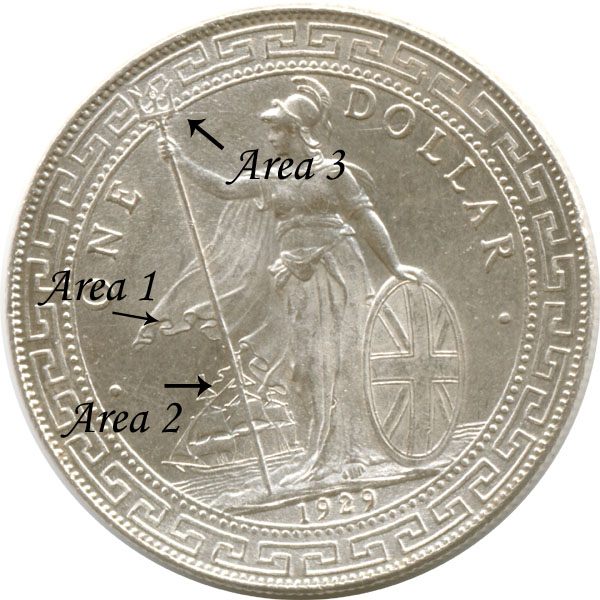
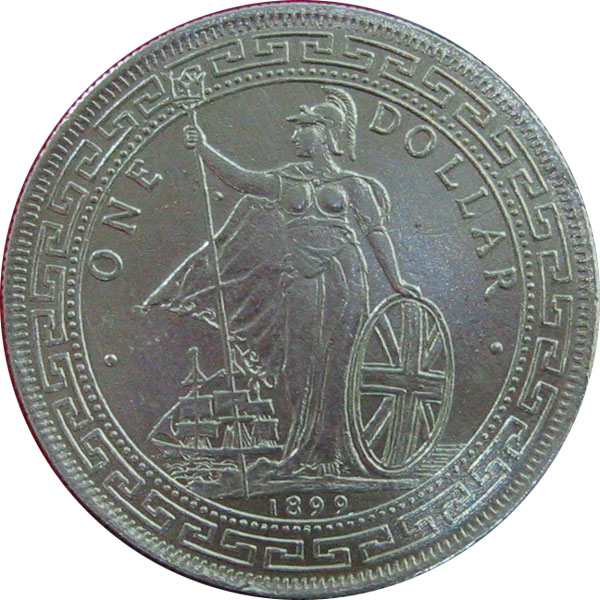
<<--- Original Coin --->> p; <<--- Counterfeit Coin --->>
Listed below are some of the inconsistencies between the original and counterfeits. There are other differences that are not listed. For example, the shape of the helmet and the shape of the breasts of Britannia. The two coins above have 600 pixels diameter while being shown only at 300 pixels. You can enlarge them yourself to get a bigger picture.
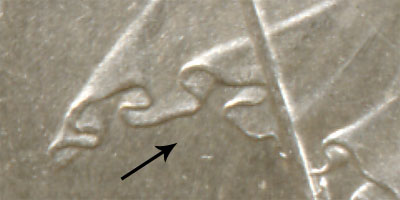 |
ORIGINAL 1 The flowing robes of the original should be like the one on the left, a wide-inverted U shape. Some fakes have a horizontal robes.
|
|
|
FAKE 1 Check the flow of the robes, which is rather flat compared to the original.
|
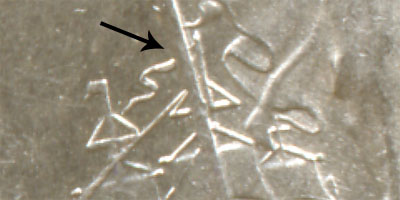 |
ORIGINAL 2 The flag flown from the center mast. Some fakes do not have the flag. |
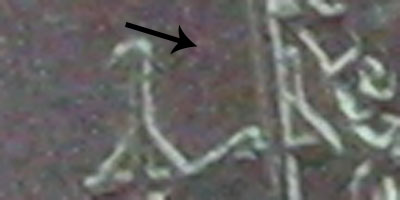 |
FAKE 2 The flag is missing from the center mast.
|
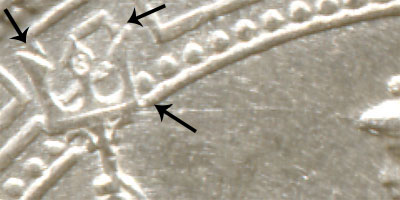 |
ORIGINAL 3 The design points between the trident and the outer box pattern in the original coin will NOT touch each other. Visible only with magnification.
|
Last update: Nov 17, 2003
